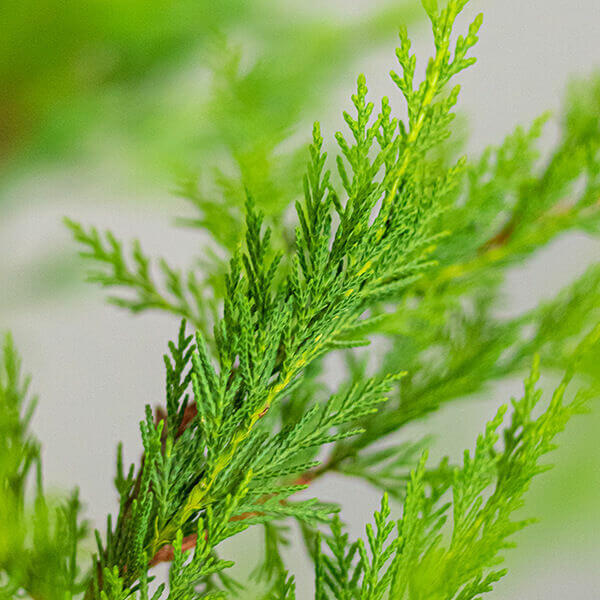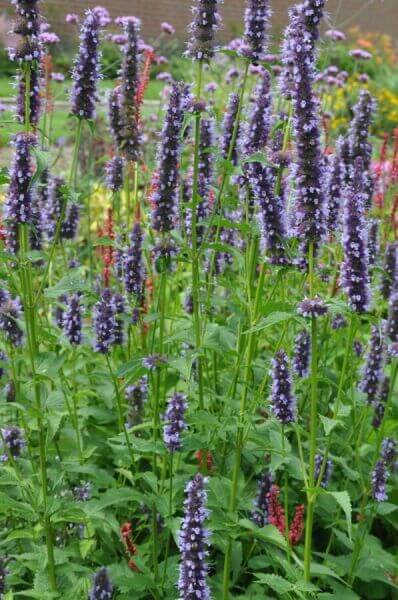Best Hedging Plants For Shape And Form
Best Hedging Plants For Shape And Form
Blog Article
Best Hedging Plants For Themed Gardens
Improve your garden's attraction with lush hedge ranges such as Yew (Taxus), Thuja, Laurel, Photinia, and Bamboo, commemorated for their structural integrity and ecological advantages.
Yew and Thuja provide evergreen protection and winter season durability, while Laurel offers fast growth and broad, aromatic leaves.
Photinia adds seasonal appeal with its lively red foliage, and Bamboo lends a low-maintenance, tranquil ambiance.
These hedges improve air quality, minimize noise, and produce tranquil, private areas.
Appropriate planting, spacing, and upkeep ensure energetic growth and eco-friendly harmony.
Explore how these lavish varieties can elevate your garden's beauty and well-being.
Secret Takeaways
Transform Your Garden With Lush Hedge Ranges
- Select Yew for its thick, evergreen growth and unrivaled longevity.
- Go with Laurel for its fast growth and broad leaves, making sure fast personal privacy.
- Select Photinia for its dynamic seasonal foliage, which turns a striking dark red.
- Utilize Bamboo for a low-maintenance, winter-hardy hedge with visual appeal.
- Area plants 2-3 per meter and prune routinely for ideal growth and health.
Popular Hedge Plants
When changing a garden with lavish hedge varieties, it's vital to consider popular hedge plants such as Yew, Thuja, Laurel, and Photinia due to their distinct qualities and advantages.
Yew (Taxus) is extremely esteemed for its longevity and dense, green growth, making it a prime choice for sustaining landscapes.
Thuja is noted for its evergreen foliage and robust winter strength.
Photinia includes seasonal vibrancy with red leaves that darken over time, creating vibrant visual appeal.
Laurel uses quick development and fragrant, broad leaves, ideal for fast personal privacy.
Furthermore, Bamboo is an exceptional option for atmosphere, providing a low-maintenance, winter-hardy option that enhances the garden's visual with its classy, swaying walking canes.
These choices accommodate a variety of horticultural requirements and preferences.
Advantages of Garden Hedges
Garden hedges provide a wide variety of advantages, making them a valuable addition to any landscape. These natural barriers are cost-effective to carry out and supply considerable wind protection, boosting air circulation and adding to sound decrease. The dense foliage of hedges like Thuja and Beech ensures personal privacy by blocking visibility, producing a serene and remote environment.
Hedges also play an essential function in microclimate regulation, supplying a stable environment that promotes plant development and reduces temperature level fluctuations. Their detailed leaf structures filter pollutants, enhancing air quality and adding to a healthier garden community.
Additionally, hedges excel in sound reduction, taking in and deflecting acoustic waves to lower ambient sound levels. This dual functionality of offering both visual and acoustic privacy improves the overall tranquility and visual appeal of any garden.
Planting and Maintenance Tips
For an effective hedge, meticulous preparation of the planting location is vital. Ensure the soil has correct pH and drainage to support strong root development.
Area the plants appropriately for the picked species. Water the hedge frequently throughout its initial development phase, adjusting as required with seasonal changes.
Carry out a methodical insect control and illness avoidance strategy, using natural or chemical treatments when necessary. Routinely inspect for aphids, mites, and fungal infections.
Apply mulch to keep wetness and reduce weeds. Seasonal pruning promotes thick development and air circulation, important for plant health.
Following these guidelines will help you cultivate a dynamic, properly maintained hedge that enhances the appeal of your garden.
Spacing and Cutting Standards
Spacing and Cutting Standards
Proper spacing and trimming are crucial for cultivating healthy, visually appealing hedges. Adequate spacing ensures each plant receives sufficient nutrients, light, and airflow.
Follow these standards for optimum hedge maintenance:
- Spacing: Position hedge plants 2-3 plants per meter to motivate robust development.
- Pruning Methods: Routine pruning is essential for keeping desired hedge height and shape. Cut brand-new growth in summer season and cut down older wood throughout winter season.
- Seasonal Care: Change trimming techniques and schedules according to seasonal requirements to guarantee plant health.
- Hedge Height: Routinely monitor and trim to keep the wanted hedge height and accomplish uniform aesthetics.
Adhering to these steps will guarantee your hedge grows, improving both the appeal and functionality of your garden.
Choosing the Right Hedge
Choosing the Right Hedge
Selecting the appropriate hedge involves examining aspects such as fully grown height, foliage density, and environmental strength. Effective hedge plant selection needs comprehending each types' growth characteristics and site-specific flexibility.
For instance, Yew (Taxus) offers outstanding longevity and dense development, while Thuja is notable for its winter resilience. In addition, considering upkeep requirements is essential; fast-growing species like Laurel or Privet demand routine trimming, whereas low-maintenance options like Bamboo or Ivy may be preferable for those looking for minimal maintenance.
Ecological elements such as soil type, light availability, and wetness conditions should likewise direct the selection process. This careful method guarantees the selected hedges will thrive, offering both practical and visual advantages to the garden landscape.
Shipment and Planting Suggestions
To guarantee your hedge plants grow, they need to be provided by specialized carriers and planted immediately upon arrival.
Follow these vital actions for successful planting:
- Soil Preparation: Enhance the soil with natural matter to improve drainage and nutrient content.
- Planting Depth: Produce a trench twice the width and equivalent to the depth of the root ball.
- Watering Strategies: Water completely after planting, keeping the soil regularly wet but not saturated.
- Mulching: Apply a layer of mulch to retain moisture and reduce weeds.
Client Support and Service
Provided the crucial role of prompt support in horticultural pursuits, our consumer assistance group is readily available six days a week through telephone, email, and social networks to use skilled advice and swiftly resolve any concerns. Their commitment to quick reaction times makes sure consumer satisfaction by dealing with queries associated with plant health, ideal planting techniques, and maintenance schedules.

-------------------
Within 24 hours
Email
Within 24 hours
This detailed assistance system, enhanced by a stellar 9.3/ 10 customer score, highlights our commitment to improving the gardening experience for each customer.
Regularly Asked Questions
How Long Does It Take for Hedge Plants to Establish?
Hedge plants generally require one to three years to become completely established, with the precise duration varying by species and growing conditions.
Effective care during this critical duration is necessary for robust development. Constant watering, alert weed control, and suitable fertilizer application are critical in promoting strong root development.
For example, fast-growing species like Laurel may develop faster, while slower-growing ranges such as Yew might take longer. Persistent maintenance accelerates the facility procedure, resulting in dense and healthy hedges.
What Are the Best Hedge Plants for Privacy?
The question of the finest hedge plants for personal privacy includes assessing evergreen and deciduous options.
Evergreen hedges like Thuja, Laurel, and Cypress provide year-round protection, guaranteeing continuous privacy.
On the other hand, deciduous hedges such as Beech provide seasonal privacy, shedding leaves in cooler months.
Secret maintenance suggestions for privacy hedges include routine cutting, fertilizing in spring, and read more proper spacing-- typically 2 to 3 plants per meter.
Additionally, constant watering and persistent weed removal are vital for promoting healthy, dense development.
Can Hedge Plants Draw In Wildlife to My Garden?
Yes, hedge plants can attract wildlife to your garden by supplying vital benefits like shelter, food, and nesting websites, thus boosting local biodiversity. For instance, yew, holly, and laurel are outstanding for attracting birds, while ivy supports a range of insects.
However, it's crucial to note that there are some downsides, such as increased maintenance to handle pests and routine maintenance. Thoroughly choosing and keeping hedge varieties can assist stabilize these benefits and downsides, eventually fostering a sustainable and lively ecosystem in your garden.
Exist Any Blooming Hedge Plants Available?
Yes, there are flowering hedge plants available that can improve the appeal of your garden.
For example, Elaeagnus, also referred to as Olive Willow, produces aromatic white flowers in the fall, including a touch of elegance.
Photinia, another popular choice, showcases dynamic red leaves that grow into a rich green, developing a dynamic visual impact throughout the seasons.
To guarantee these plants grow, it's essential to practice appropriate pruning methods and seasonal upkeep, such as cutting brand-new development in the summer and cutting back in the winter.
These steps will help preserve the health and visual appeal of your blooming hedges.
How Do I Avoid Bugs in My Hedge Plants?
To avoid bugs in hedge plants, use natural bug control approaches and keep correct hedge care. Present beneficial insects like ladybugs, which prey on harmful pests, to create a well balanced ecosystem.
Frequently check your hedges for indications of problem and without delay get rid of any afflicted parts to avoid the spread. Guarantee the health of your hedges by applying balanced fertilizers and providing adequate water.
Utilize mulching to maintain soil wetness and appropriate spacing to decrease plant stress and promote robust growth. These practices jointly assist in lessening pest issues and keeping a healthy hedge.
Conclusion
In essence, picking the best hedge varieties such as Yew, Thuja, and Laurel can change any garden into a serene haven. These plants provide year-round plant, boost aesthetic appeal, and offer useful benefits like noise decrease and wind security.
Proper planting strategies, precise spacing, consistent watering, and seasonal cutting are crucial for ideal growth.
Reputable delivery services and skilled client assistance guarantee a seamless experience from purchase to planting, making it easier than ever to elevate your outside space.
Garden hedges offer a plethora of benefits, making them an important addition to any landscape. These natural barriers are economical to implement and offer significant wind defense, enhancing air blood circulation and contributing to noise decrease. The dense foliage of hedges like Thuja and Beech guarantees personal privacy by obstructing presence, creating a secluded and tranquil environment.

Pruning Strategies: Routine pruning is important for maintaining wanted hedge height and shape. Cut new development in summertime and cut back older wood during winter season.
Report this page